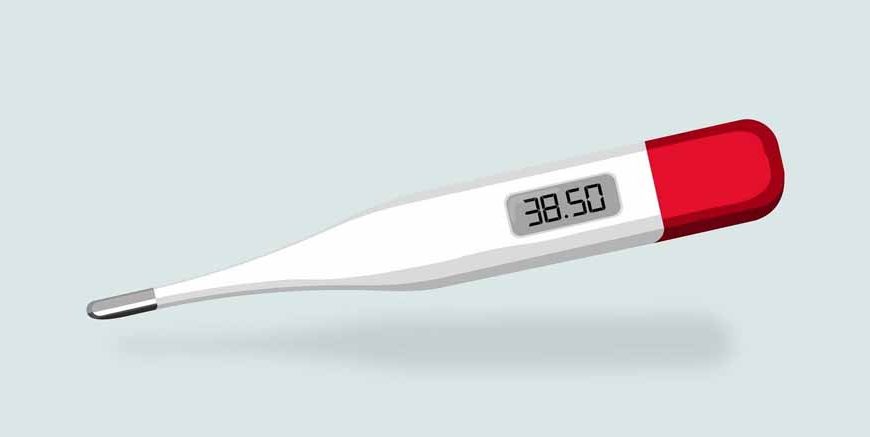‘Mercury Rising’
Astrologically speaking, the above phrase refers to the Planet Mercury residing in someone’s First House. In the case of Thermometers of yore, it would only mean that the person whose temperature is being observed, is increasing!
Luckily, we don’t have to use those age-old ‘Mercury’ thermometers, when it comes to taking the temperature of our infants. And it’s a relief that we don’t, too, what with Mercury being one of the most toxic substances out there.
In this article, we have compiled some pertinent information pertaining to that Infant Thermometer. From learning How to Use a Thermometer for Infants, to choosing the Best Infant Thermometer out there, you can be sure to find everything you are looking for in this blog post. Want to learn How to use a Thermometer for Infants? Let’s begin, with a look at the Types of Infant Thermometers that can be used to record your baby’s temperature!
Choosing the Best Infant Thermometer: Types of Infant Thermometers
If you’re the parent of a newborn child, you’re obviously going to be looking for the Best Infant Thermometer!
Presenting the different Types of Baby Thermometers in the market, along with pertinent information on How to Use each Thermometer for Infants!
- Digital Oral Thermometers
- After turning it on, place it under Baby’s tongue towards the back of their mouth, instructing them to keep their mouth closed.
- After you receive the notification that the temperature has been successfully recorded, take out the thermometer and observe the reading.
- Digital Ear Thermometer
- In order to get an accurate reading here, the thermometer will need to be placed accurately inside Baby’s ear. Start by inserting it gently into the ear, and ensure it is pointing to the eardrum.
- Hold it until the temperature is recorded.
- Gently take the thermometer out and note the recorded temperature.
- Underarm Thermometers
- You want to ensure that there is absolutely no clothing between your baby’s skin and thermometer, when you insert it into their armpit.
- Make sure that the thermometer is firmly held in place, while it is in the process of taking that reading. One effective way to do this, is to ensure that the side of your baby that is holding the thermometer, is held firmly against your chest.
- When the notification arrives that the temperature has been recorded, remove it from their underarm and observe the temperature.
- Rectal Thermometer
- Ideally, you want to first lubricate the tip of that rectal thermometer, with some petroleum jelly.
- Laying your infant on their back, you want to gently lift their thighs and insert that lubricated thermometer around ½ to 1 inch inside their anal canal. Alternatively, you can have them lie ‘belly down’. If you do this, ensure that your hand is against their lower back, so they are held firmly in place.
- Ensure that the thermometer is held in place, until it is done. Then remove it gently and observe the temperature.
- Forehead Thermometers
- After turning the thermometer on, lightly sweep it across Baby’s forehead. Ideally, you want to place it in the middle of their forehead, and then gradually drag it towards their hairline.
- The screen will display the temperature recorded by the thermometer’s sensor.
The type of thermometer we know best! This one is inserted into Baby’s mouth, to record their internal temperature.
How to Use it
Note: You want to wait for at least 15 minutes after your child has had something to eat or drink, before taking their temperature with this one.
Ever put a thermometer inside your ‘Ear’?
How to Use it
Cool Fact: This thermometer makes use of an ‘infrared scanner’ that helps determine the temperature inside the ear canal.
Note: This type of thermometer is only recommended for babies older than 6 months.
Yet another of those thermometers you must have used when you were young!
How to Use it
Note: Again, it’s recommended to use the ‘digital’ version of this thermometer, as it can measure the temperature of your infant in a matter of ‘seconds’.
While this might not be the preferred choice of thermometer for most parents, it can record their infant’s ‘exact’ body temperature!
How to Use it
Note: You want to select a rectal thermometer with a ‘short’ probe. This will reduce the chance of ‘injury’.
It’s common for us to touch someone’s forehead when they are not feeling well, to see if they are warm. No wonder, then, that we have these Forehead Thermometers for Infants, also known as Temporal Artery Thermometers.
How to Use it
Note: There are external factors that can play a role in affecting the temperature taken by a temporal artery thermometer. For instance, Sunlight and Cold Temperature outside.
Infant Temperature Recorded by a Thermometer: When to Call a Doctor
While fevers are common in children, they are in most instances not something to worry about. However, there are certain cases when calling the doctor is the need of the hour. Like the following.
- If your infant less than 2 months old has a fever that is 100.4 or more.
- If your infant less than 1 year old has a fever greater than 102 for more than a day.
All said and done, a fever is the body’s way of fighting infections. If your infant is sleeping soundly and is well-hydrated, there is generally no need to panic when they are running a fever!
Needless to say, if your child is feeling ‘warm’ or is generally showing signs of being ‘sick’, one can never take it lightly! Get your preferred choice of Infant Thermometer from the medical store today, to ensure you always have the equipment ready to monitor your baby’s body temperature. After all, we can \ never be too careful with our young ones!














